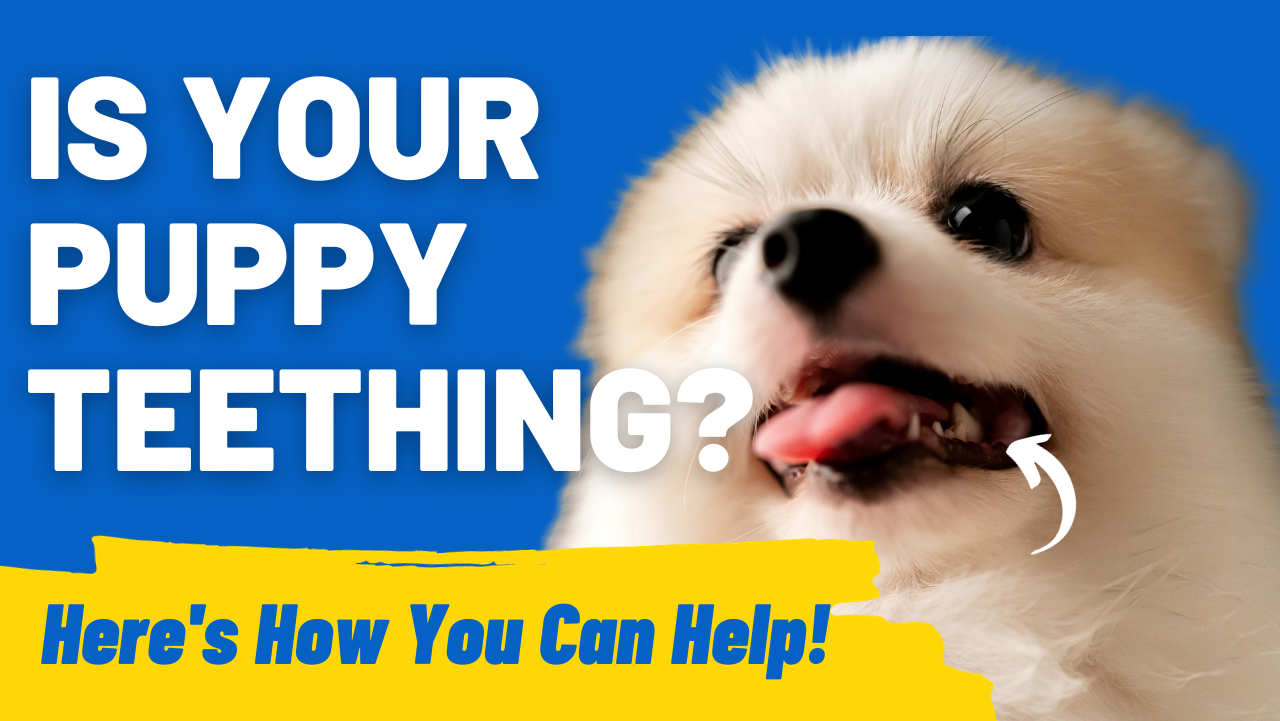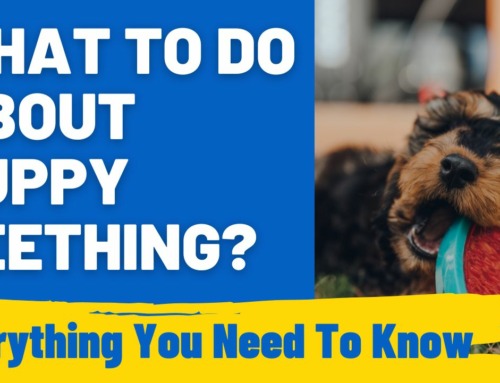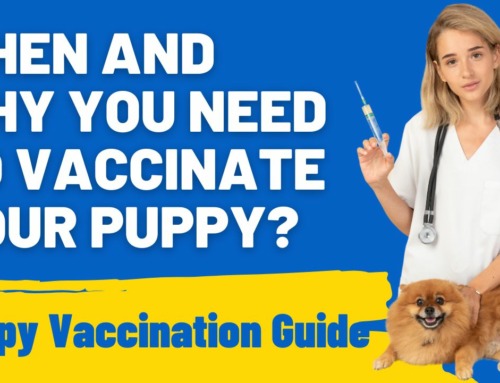If you’ve noticed more drool on your floors or an uptick in gnawed-on furniture corners, you might be the proud parent of a teething puppy. Just like human babies, puppies go through a teething phase that can be tough on both your furry friend and your household. But fear not!
This guide will walk you through the teething phases in puppies, how to help a teething puppy, and why it’s crucial to maintain good dental health from the get-go.
Understanding Puppy Teething
Teething is a major developmental stage for puppies that typically starts around three to four weeks of age and can continue until they’re about six months old. Let’s break down the teething phases in puppies:
| Phase | Age | Development | Signs to Watch For |
| Neonatal Period | Birth-2 weeks | Puppies are born without any teeth. | Not applicable – no teeth present. |
| Transitional Period | 2-4 weeks | Deciduous teeth (baby teeth) begin to emerge. | Small teeth begin to break through the gums. Puppies may start chewing on soft objects. |
| Socialization Period | 5-8 weeks | All 28 baby teeth have usually erupted. | Increased chewing and biting behaviors; may chew on anything available. |
| Juvenile Period | 12-24 weeks | Adult teeth start replacing baby teeth. | Drooling, chewing, occasional blood spots on toys, possible loss of appetite. |
| Adult Teeth Fully Emerge | 6-7 months | All adult teeth should be present, 42 in total. | Baby teeth are gone, adult teeth are visible. Chewing may lessen but still present due to habit. |
However, when do puppies start losing teeth? It’s important to note when puppies start losing teeth, they may swallow them, and this is usually harmless. What do puppy teeth look like when they fall out? They’re small and sharp, like tiny needles!
During these phases, it’s important to monitor your puppy’s behavior and provide them with appropriate teething toys. If any baby teeth don’t fall out while adult teeth come in, a visit to the vet may be necessary to avoid future dental issues.
Recognizing the Signs of Teething in Your Puppy
Image Source: Canva
As your puppy grows, just like human infants, they go through a phase of teething, which can be an uncomfortable experience for them. This developmental stage is crucial, not only for the growth of their permanent teeth but also as a period that can shape their chewing habits.
As a caring pet parent, it’s important to recognize the signs your puppy is teething, so you can provide the best care and comfort during this tender time.
Teething Puppy: Behavior and Symptoms
- Increased chewing and biting: Puppies will gnaw on toys, furniture, and sometimes even hands and feet.
- Drooling: More saliva than usual can be a clear indicator of teething discomfort.
- Whining or fussiness: Teething can cause discomfort, leading to more vocal expressions of unease.
- Red or swollen gums: As teeth push through, the gums may become irritated.
- Low-grade fever: Just like human babies, puppies can have a slight increase in temperature.
- Loss of appetite: Due to gum soreness, puppies may show less interest in food.
- Visible lost teeth: Finding tiny teeth around your home is a clear sign of teething.
- Bleeding gums: You might notice small spots of blood on their toys or where they chew.
- Smelly breath: Teething can sometimes cause an odor from the mouth due to bacteria in inflamed gums.
- Changes in eating habits: Puppies may prefer soft foods or eat more slowly due to tender gums.
Providing Relief: How to Help a Teething Puppy
Finding the best puppy teething toys can be a lifesaver during this phase. One of the most effective ways to aid a teething puppy is to provide them with toys designed to soothe and improve their dental health.
Thus, teething toys and puppy dental health are essential factors in choosing the best relief for your pets. Here’s a carefully curated list of the best puppy teething toys that not only entertain but also offer significant benefits for your furry friend’s dental hygiene.
- Rubber Chew Toys: These toys are durable and can withstand heavy chewing. They help in massaging the gums to relieve pain and can be frozen for added relief. They also promote the removal of plaque as the puppy chews.
- Plush Toys with Chewable Areas: Soft toys like Puppy Toy Mat with Teething Chew Toys from HoundGames are reinforced with areas that provide comforting textures that puppies crave while also allowing for safe chewing that can gently massage the gums without causing damage.
- Rope Toys: The fibers in rope toys can act like dental floss, helping to clean between teeth and maintain gum health. They’re great for interactive play which also enhances your pup’s overall experience.
- Puppy Chew Treats: They offer a tasty reward while also doubling as a chew that can scrape away soft tartar and massage the gums to improve dental health.
- Cooling Toys: Toys that you can freeze provide the added benefit of cooling and numbing the gums to relieve discomfort. This can be especially soothing during the height of the teething phase.
- Interactive Puzzle Toys: While these may not have direct dental health benefits, they can distract a teething puppy from chewing on inappropriate items, thereby indirectly contributing to dental wellness. Houndgames’ Puzzle Toys is a great toy for your puppies to chew and aid its teething.
Home remedies for teething puppies are also valuable. Chilled carrots or a frozen washcloth for chewing can provide some natural relief. However, avoid anything that could splinter or is small enough to swallow.
Caring for Your Puppy’s Dental Health
Image Source: Canva
Dental care should start early. Regular brushing with a puppy-appropriate toothpaste and teething toys that promote puppy dental health are paramount.
Amid the teething chaos, it’s important not to overlook the significance of puppy dental health. Establish a routine of brushing your puppy’s teeth early to prevent dental diseases later in life. Not only does this keep their new adult teeth clean, but it also gets them used to regular dental care.
Professional Care and When to Seek It
Sometimes, teething issues may require professional attention. If your puppy seems excessively uncomfortable, is bleeding a lot from the mouth, or if baby teeth are not falling out as they should, it’s time to consult a veterinarian. In some cases, intervention may be necessary to remove retained baby teeth that could crowd adult teeth.
Conclusion
Your puppy’s teething period is a critical time for developing good habits that ensure a lifetime of healthy teeth. By knowing how to help a teething puppy and recognizing the signs of teething, you can provide the comfort and care your little companion needs. Remember, this stage is temporary, and with your support, your puppy will grow into those adult teeth just fine!
FAQs
Can a teething puppy’s adult teeth be affected by how I handle teething?
Absolutely! Ensuring that your puppy has safe toys to chew on and establishing a dental routine can set the stage for healthy adult teeth.
Should I be worried if my puppy’s gums are bleeding?
Minor bleeding can be normal, but if it’s excessive or if you’re worried, it’s best to check with your vet.
Soothe Your Puppy’s Teething with Hound Games!
Struggling with your puppy’s teething? Find relief with our specially designed teething toys at Hound Games. Comfort, fun, and a happy puppy smile are just a click away. Visit Hound Games now – your partner in your puppy’s teething journey!




